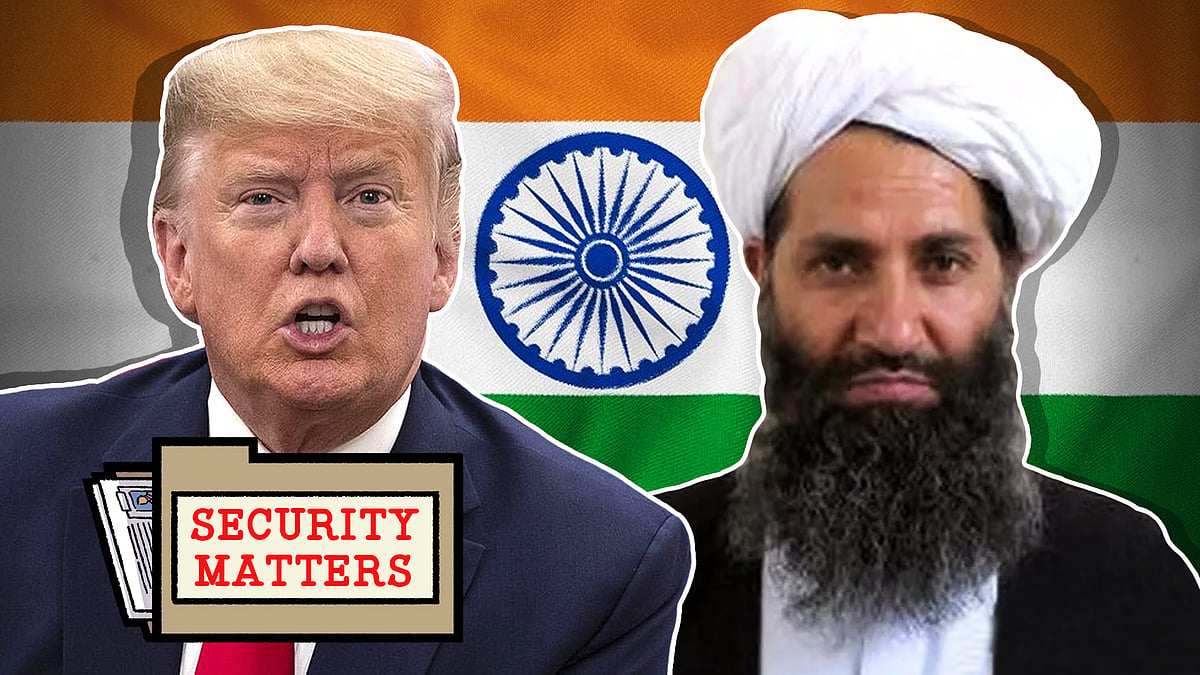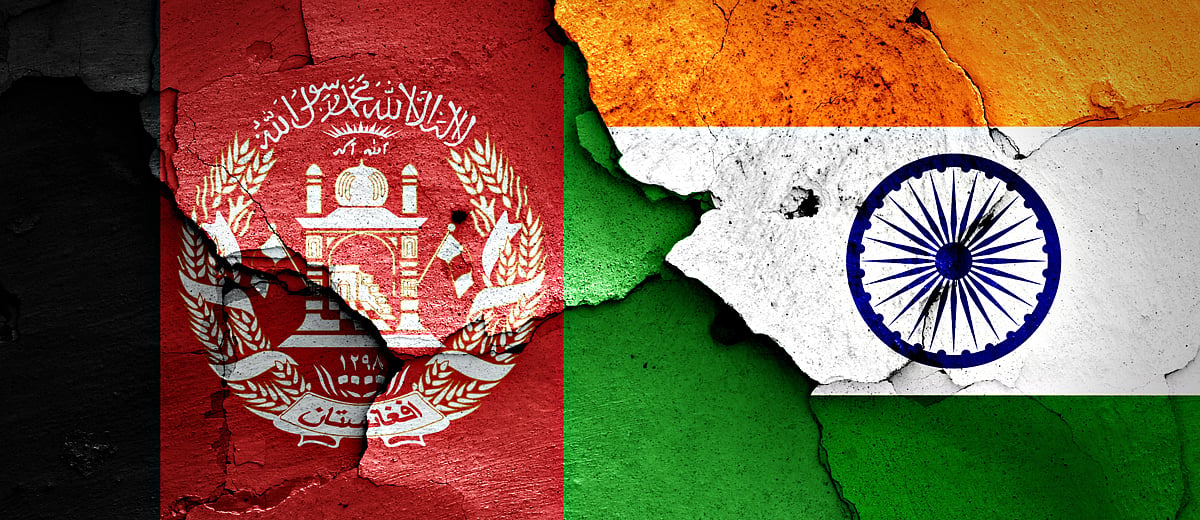The next chapter in a bloody history: Will the US withdraw from Afghanistan by May 1?
And what does this mean for stakeholders like India?
As the May 1 deadline draws closer for the withdrawal of the remaining US troops in Afghanistan, there is growing uncertainty about the pullout and the possible response of key stakeholders. The US, which had assured its withdrawal in the Doha deal last February, seems caught in a dilemma, while Afghanistan resents any plan for an interim setup. Meanwhile, the Taliban leadership is signalling that it will follow a different course of action if there is any tinkering of the withdrawal pact as laid out in the Doha deal.
This scenario has implications for primary and secondary stakeholders in different ways.
The high priority, marked by varying degrees of anxiety, accorded by different actors in the region can be gauged by the fact that March has witnessed two major conferences aimed at finding a consensus over the Afghanistan peace process. Russia hosted the Moscow conference on March 18, attended by representatives from the Taliban and the Afghanistan government. This was soon followed by the ongoing Heart of Asia-Istanbul Process at Tajikistan’s Dushanbe, which will carry forward the 2011 regional initiative launched in Turkey to facilitate dialogue on peace and stability in Afghanistan.
The Dushanbe conference also saw India’s external affairs minister S Jaishankar articulating India’s position on the Afghan question. Now, the next few weeks will provide crucial points of convergence and divergence for various stakeholders. The presence of the Taliban as an assertive, non-state actor at the very centre of the process has added to the delicate nature of the crisis resolution efforts. Taken together with other key stakeholders in the country and the region, the developing situation can be scrutinised in many ways.
First, seen within the immediate context of the Doha deal, the US, Afghanistan, and the Taliban are the main stakeholders in the current peace process. The new government in Washington, DC, has been grappling with the difficulties of the May 1 deadline to withdraw America’s 2,500 soldiers in Afghanistan. Earlier this month, US president Joe Biden had said it was “tough” to meet the Doha deal’s obligation. However, the difficulties of remaining in Afghanistan, despite no signs of the US winning the war, are as severe as the possibility of a civil war escalating in Afghanistan in the event of a sudden pullout, and without any clear peace agreement.
The third option – of prolonging the stay of the troops for a short period – is also a risky choice in view of the Taliban’s warning of “consequences” should the US delay in withdrawing its soldiers. The Taliban, which ruled Afghanistan from 1996 to 2001 before this 20-year-old conflict began, now controls most of rural Afghanistan and so, such a warning comes with the danger of the war-ravaged country relapsing into another phase of intense violence. The Doha deal had made the withdrawal of US troops a quid pro quo for the Taliban honouring its commitments, such as denying a safe haven to al Qaeda.
Moreover, the current Ashraf Ghani-led government in Afghanistan has rejected the US plan of an interim administration in the country. Instead, Ghani has floated the idea of fresh elections within six months, putting his foot down against any stopgap arrangement of an unelected government. Officials have even hinted that Ghani might suggest an election observed by the United Nations to ensure its acceptability on all sides.
The Taliban, on the verge of gaining military control of most of the country, seems neither interested in a ceasefire nor keen on playing a part in an interim government. In its long armed conflict with the Afghanistan government, the militia already controls large rural swathes of the country. It’s very plausible that given the territorial gains that the Taliban has made in the last few years, it would not entertain the plans for an interim regime or elections as part of long-term commitments. In its assessment, this could be seen as frittering away a strategic edge.
The US is aware of the interest of other regional players and big powers, like Russia and China, and has been trying for a multilateral approach to long-lasting conflict resolution in Afghanistan. The fact that Pakistan hosts an influential section of the Taliban militia also makes its role as facilitator of dialogue important in the US plan. The attendant concessions and Pakistan’s military view of looking at Afghanistan as a route to “strategic depth” is another part of the geopolitics in the region.
Another dimension is what a section of commentary recognises as countries concerned with the “spillover effect” of the conflict; this group includes Russia, China and India. However, the Indian concern, decoupled from looking at the obvious Pakistan attempt at finding “strategic depth”, could extend to other spheres of its engagement with Afghanistan. That’s one reason why India has been invited to the Heart of Asia-Istanbul Process.
India is also a stakeholder in the Afghanistan reconstruction process, as it has already invested around $3 billion in the Taliban since 2001. A large part of it – around $2 billion – has been invested in capacity- and infrastructure-building processes. A sizable number of Indian workers and experts from different fields have been working there. Such a scale of humanitarian aid and the presence of Indians in the reconstruction process makes India a keen watcher of political developments in its immediate neighbourhood.
As I wrote in this piece last year, India’s long experience as a target of cross-border terrorism has defined its position of seeing any hint of a “moderate Taliban” as an oxymoronic expression in its firm articulation of its position on the Afghanistan peace process:
“India has been averse to the mainstreaming of the Taliban, which it sees as a terror militia. In pursuit of what India calls its ‘peace and reconciliatory approach’ to Afghanistan, Indian diplomats have been inclined to engage with only Afghan-owned and Afghan-led talks in an official capacity. This, however, needed an adjustment. In 2018, with inevitable signs of a US-Taliban deal taking shape, it was only in a non-official capacity that India sent two diplomats – Amar Sinha, former envoy to Afghanistan, and TCA Raghavan, former Indian high commissioner to Pakistan – to an international conference in Moscow on the Afghanistan peace process. The conference was attended by a Taliban delegation too.”
The line adopted by India now is that it will favour a peace and reconciliation process that is “Afghan-led, Afghan-owned, and Afghan-controlled”. However, India is aware of the externalities that will shape, and be shaped by, the Afghan situation. Among the three key points emphasised by Jaishankar at the Dushanbe conference was the need for a genuine “double peace”: peace within Afghanistan and peace around Afghanistan.
Given the complex matrix of major and regional state actors, and an unpredictable non-state actor at the core of the conflict resolution process, the war-ravaged Afghanistan seems set for another round of the “great game” that it has tragically been hosting since the 19th century. From the sidelines, India will be an interested party for reasons that go beyond spillover effects.
 America handing over Afghanistan to the Taliban is very bad for India
America handing over Afghanistan to the Taliban is very bad for India
 Afghanistan: what price tag do we put on strategic security?
Afghanistan: what price tag do we put on strategic security?